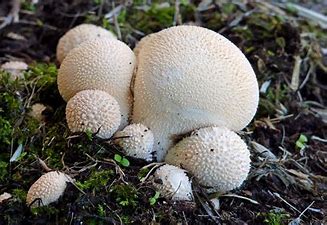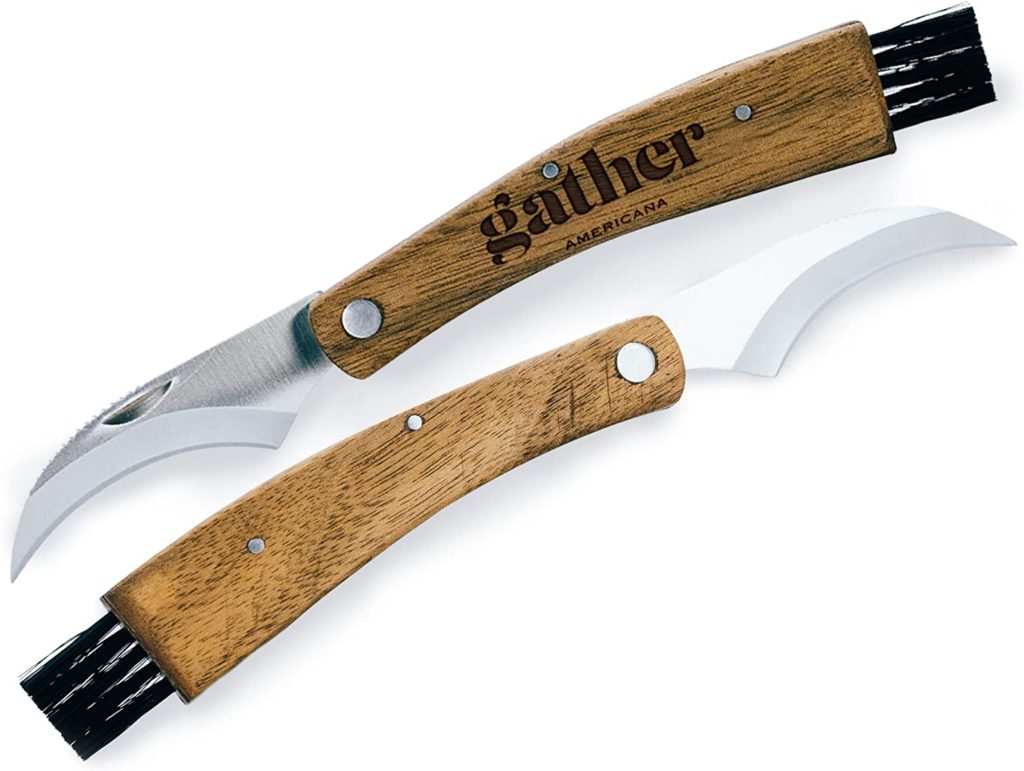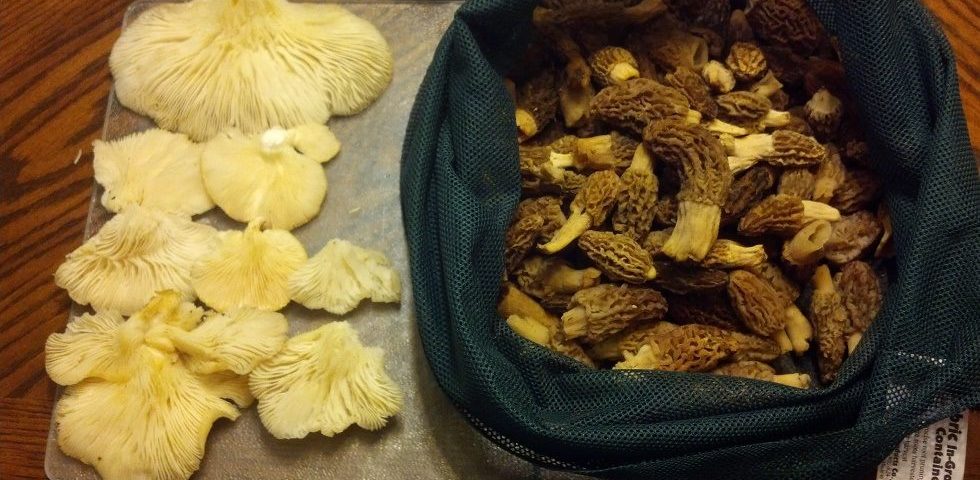You must love the outdoors, or at least want to love the outdoors to be a forager. It is sometimes referred to as quiet hunting. You can spend hours in the woods walking miles and come home empty handed. Or, sometimes, you will be in the right place at the right time and stumble on to the motherload. However, if you expect the latter each time you will be frustrated, disappointed, and it will bring an end to your foraging journey.
Foraging is about so much more than finding wild edible plants and mushrooms. It is about reconnecting with nature in a way that was always intended. There is simple soothing and even healing benefits to slowly searching through the forest for a wild edible prize. In my journeys I have come across many wonderful places, met great people, seen elements of nature that many have not and never will see. And occasionally I get to end the day with a delicious meal made at least in part by the wild plants and mushrooms that I harvested myself from the wild. The simple joy and even pride that it brings cannot be described it must be experienced.
My youth was not filled with foraging as my parents did not engage in the activity themselves and mushrooms were something that was not on the menu unless purchased at the store. No, I came into foraging late in life to experience nature more deeply and more often. It started with a few simple, easy to identify mushrooms like the puffballs, chicken of the woods, morels, and oyster mushrooms. As I explored, I would often come across new and interesting mushrooms that I was unsure about. For these discoveries I would take pictures and pick a couple to bring home to identify them. Sometimes I was successful and other times not but each time I found joy in the learning.
This article will be a surface layer intro to the basics of foraging. It is intended to get you started on your journey, but the learning really begins when you get into the field. So here is a top-level overview of a few key components of wild food foraging.

The Rules of The Woods
Yes, like anything there are rules that we should adhere to. There are general rules that good foragers follow as well as actual laws that need to be adhered to both for your own good but also for the good of the outdoor community. Yes, it is true one bad egg can ruin it for everyone.
Thy first rule that I incorporated when I first started foraging for wild edible mushrooms is never say I think, I am pretty sure, or I believe before eating any wild plant or mushroom. Although this seems like a no-brainer there are cases every year where someone eats something without properly identifying it and ends up sick. Often this is cultural where someone that harvested a mushroom in their country finds one here that looks the same but is not and ends up getting sick. Before eating any wild plants or mushrooms be sure to have an iron clad identification. Use multiple resources including field guides, the web, and local experts to ensure proper identification.
The second rule is to respect the property of others. There are many places to forage and although that big patch of mushrooms in that yard look tempting do not harvest them without first getting permission to access the property. This rule also applies to public property where foraging rules will vary greatly. Be sure to check the website or call and speak to someone regarding parks, wildlife preserves, as well as city, county, state, and national lands. Unfortunately, there are no blanket rules regarding foraging, so it is up to you to do some research before heading out.
The third and final rule that I will cover here today is to always take out more than you bring in. Unfortunately, there are many who do not respect the beauty of nature and seem to have no issue filling it with their trash. It is up to each of us to chip in on the never-ending mission to keep the woods and water garbage free. Bring a bag with even if it is just a small grocery bag and pick up any garbage that you find. Leave it better for the next person and hopefully they will pass it forward. Don’t worry if you can’t get it all as sometimes there is just too much so simply try to take out what you can. I always keep a few garbage bags in the car for just such an occasion.
The Tools of The Trade
Truth be told all you need to do is walk out into the woods or field and look for wild edible foods that you can identify. However, most of us prefer to have some basic tools with us to help make the experience more enjoyable.
First of course is a good field guide. This is made easier if you are searching specifically for mushrooms or wild plants as you can carry one or the other with you. However, we often head out on foraging walks with the let’s see what we can find mentality so one mushroom guide and one plant guide. Instead of recommending specific guides to you my recommendation is that you do some research to find the best guides for your region. Although there are some great general guides, I always prefer something more specific to my area. For example, here in Florida I may use Mushrooms of the Gulf Coast States or Florida’s Wild Edible Plants. In Alaska I may use Alaska’s Wild Plants or Edible Mushrooms of Alaska. Do some research, read reviews, and look for a local group who can give you advice or feedback.
- My Top Three Mushroom Field Guides
Next would be a good basket, bag, or backpack. I have personally used all three and the basket is the most popular. However, I tend to lean to the backpack with some type of bag to carry my finds. I like to carry a few basics like my phone, water, bug spray, sunscreen, guides, and snacks and the backpack makes this easy. Short hikes focused purely on foraging then baskets are great as they keep your mushrooms and plants organized and accessible. For bags I have used paper, plastic, and coffee bags. Plastic is not good for longer forages especially for mushrooms as they retain moisture and do not protect you treasures well. However, for quick trips I do use them as I can wash them and use them again. Paper bags with handles work great. They breath can offer some protection and are lightweight. A friend of mine takes commercial coffee bags and turns them into an over the shoulder bag by sewing on a strap. I love these for the breathability and ease of carry. Again, don’t worry if you don’t have just the right one. Any experienced forager has at least one story of carrying mushrooms in a used fast-food bag or a bundled-up t shirt.
Check out this mushroom foraging field knife!


Start With Something simple
We all want to go out and instantly find something wonderful or the motherload to share with our family and friends. That of course like most things in life is not how it goes. Mushroom hunting and wild food foraging is no different than hunting and fishing in that you can spend hours doing it with little to no food to show for it. Part of the joy of foraging is to explore new areas, hike new trails, slow down and look closer at nature, and take a deep breath and enjoy your surroundings and the moment. The better you get at that the more often you will find edible treasures. When first going out try to target just a couple things but keep your eyes open for others. When we first started mushroom hunting our targets were Morels, Oyster Mushrooms, Chicken of the Woods, and Puffballs. These were three mushrooms that we were sure we could ID safely. Along the way we would discover new mushrooms and attempt to ID them with photos and samples collected in field. For edible plants we started with simple ones like dandelions, plantain, bidens, and fruits and berries that we were familiar with. This gave us plenty to look for and got us into the woods where our adventures and learning began.
This is the simple joy of foraging, just head out into the woods, pay attention, and see what you find. Oh, by the way don’t forget your favorite pocketknife, they come in handy.
